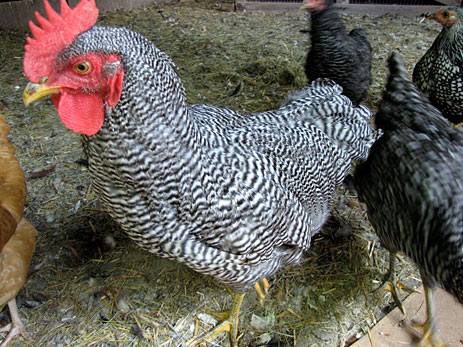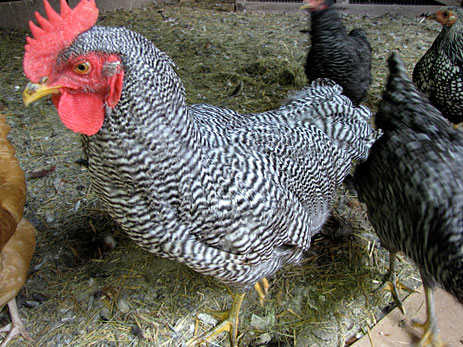 Cock blocking: This mean rooster must be stopped before he hurts someone. Photo: Steph LarsenThere’s a chore I’ve been putting off for some time, that I know will be one of the more unpleasant things I’ve encountered so far on our little farm.
Cock blocking: This mean rooster must be stopped before he hurts someone. Photo: Steph LarsenThere’s a chore I’ve been putting off for some time, that I know will be one of the more unpleasant things I’ve encountered so far on our little farm.
It’s time to cull some chickens.
I have only killed a chicken once in my life. I’d just graduated from college and was visiting my cousins in the Peace Corp in Guatemala. In honor of our visit, some very nice Mayan women decided to have chicken for dinner, and I was the one left holding the machete.
This situation is a little different though, because while dinner may be the eventual outcome of these chickens, that’s not my primary intent. Rather, I’m culling them because they aren’t contributing to the farm.
I feel sorry for one of them — my poor sick Buff Orpington that I wrote about back in September. She has a blockage in her digestive system, and none of the non-surgical methods to fix it have worked. I’ve watched as her health has deteriorated, and at this point I think the humane thing to do is let her die quickly instead of drawing out her unhappy life because I keep hoping she’ll perk up.
The other target of my culling I don’t feel sorry for — he’s a mean, aggressive rooster that has a habit of attacking me when I have my back turned. We have four roosters, in part because they protect the hens and keep the flock balanced. Three of them behave like gentlemen, and I don’t want them learning any bad habits. This fourth rooster gets his feathers ruffled easily, and it won’t be long before his spurs could cause some serious damage to me, our dog, or worse, a visiting child.
He’s a liability I neither need nor want.
Culling is a part of having a profitable farm, though not the most enjoyable. In the garden, we thin the sickly seedlings so there’s room for the strong ones to grow. We save seeds from the best fruits to plant next year. By culling certain individuals, I can make sure that my flocks stay healthy and that I’m not wasting limited resources on an animal that isn’t earning its keep.
I’ve been putting off this task not only because it’s unpleasant — I’m not looking forward to ending a life — but because I don’t exactly know how to do it. I want it to be as fast and as painless as possible, and I’m nervous that I’ll make a mistake the first few times and cause more pain than necessary.
And after the bloody part is over, I also don’t exactly know how to process the chicken. We’re not big chicken eaters at our house, but it seems to me that if I’ve invested time and energy into raising an animal, I should make use of it if I can. I understand the theory of it — dip it in scalding water to loosen the feathers before picking them off, removing the parts that aren’t good to eat — but never having done it, I’m a little skeptical that I’ll do it properly.
But then again, mistakes teach me more than successes, and the dog will think any mistakes I make in chicken processing are quite tasty.
Culling a chicken is not a small matter, but culling a sheep takes even more careful observation and consideration. There are a number of traits that lambs inherit from their mothers, like their resistance to internal parasites, rate of weight gain, overall temperament, and twinning rates. It will take more time to determine whether there are ewes we need to cull, and I’ll look forward to that day even less. But it’s unlikely we’ll cull any ewes soon, not until after we see how they do with their lambs next spring.
I find no joy in playing goddess, deciding who lives and who dies. But livestock aren’t pets and our farm isn’t a hobby. It’s a business. But it won’t be a very successful one unless I cut out the parts that drag the rest down.
At the very least, I hope the rooster is tasty. Coq au vin, anyone?



